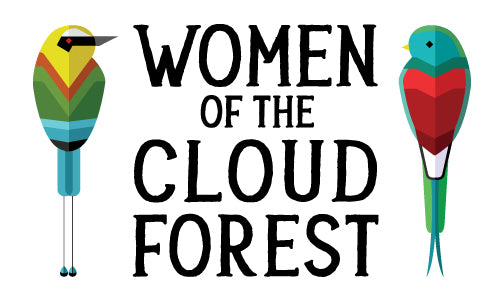Paint Your Own Ornaments: Raptors

In the spring of 2025, our partners from The Peregrine Fund were inspired after watching a live Zoom presentation featuring our artisan partners from Nicaragua. They were able to see these wonderful craftsmen and women hand-carve and paint these intricate ornaments. This sparked a powerful idea, one that beautifully bridges artistry, conservation, and community.
The aha moment developed into these Paint Your Own Ornament Kits. Both organizations saw it as a creative way to connect customers directly with the artisans, while also sharing the message of fair trade and sustainable livelihoods.
We brought the idea to our artisan partners on Isla Solentiname, and they embraced it wholeheartedly. Not only would it provide them with more work, but it also offered a chance to share their time-honored skills with people far beyond their island.
With the Peregrine Fund’s deep commitment to conservation and community empowerment, this project was a natural fit. All our products are sustainably made in some of the countries where the Peregrine Fund works, making this a truly mission-aligned partnership.
We are proud to team up with the Peregrine Fund on this fun and meaningful new product. We hope you enjoy this presentation and feel the same inspiration that brought it all together.
Each kit includes unpainted ornament(s), along with a behind-the-scenes video (below) of the artisans carving and painting, offering a glimpse into their world, their culture, and their craft.
VIDEO
FUN FACTS ABOUT RAPTORS

The Harpy Eagle is one of the largest and most powerful eagles in the world. Its rear talons measure about 4 to 5 inches long—comparable in size to a grizzly bear's claws.
This majestic bird is found in the rainforests of Central and South America, and their high pitch call allows them to break through the dense jungle vegetation.
Their powerful legs, feet, and sharp talons are designed to catch prey that would be off-limits for most other birds. This includes monkeys, sloths, and even small deer are all on this eagle’s menu.
The presence of a Harpy Eagle is a powerful indicator of a balanced and healthy ecosystem, as it sits at the top of the food chain and depends on the stability of all species below it.
Harpy Eagles nest in some of the tallest trees in the forest. They pick the highest point on the trunks of these trees, just where the branches begin to spread out, at around 130 feet or 40 meters high.

Peregrine Falcons live and breed on every continent in the world except Antarctica. They are strong, efficient flyers and skilled at catching a variety of prey from small songbirds to large waterfowl. This versatility allows them to live in almost any type of climate and habitat – and they do!
In a hunting dive—called a “stoop”—the Peregrine Falcon can reach speeds of over 200 mph, making it the fastest animal on Earth.
A hunting Peregrine uses many strategies for catching a good meal but they typically catch their prey in the air with fast pursuits, rapid dives, and other impressive aerial maneuvers for which these falcons are known and admired.
They possess exceptional vision, enabling them to spot prey from great distances, and use a third transparent eyelid to clear debris and protect their eyes during high-speed dives.
To this day, they are still one of the most popular birds in the sport of falconry, and in ancient times they were considered the birds of royalty.
The Peregrine Falcon was removed from the Endangered Species list in 1999, thanks to efforts by The Peregrine Fund and their partners.

As one of the longest-living raptors in the world, condors may live up to 60+ years old.
Condors are carrion eaters, feeding almost exclusively on dead animals. Since condors don’t hunt their food, they sometimes must travel far and wide in search of their next meal.
Their bald heads and necks are not just for looks—this is a natural adaptation for hygiene. A featherless head helps them stay cleaner when feeding face-first inside a carcass.
In the 1980s, the California Condor was on the brink of extinction, with only 22 individuals left in the wild. Thanks to intensive conservation efforts from The Peregrine Fund and their partners, the population has rebounded to over 500 Condors today.
The California Condor is the last critically endangered raptor on the US Endangered Species List, Currently their biggest threat is lead poisoning which also impacts other scavenging raptors like Golden and Bald Eagles.
